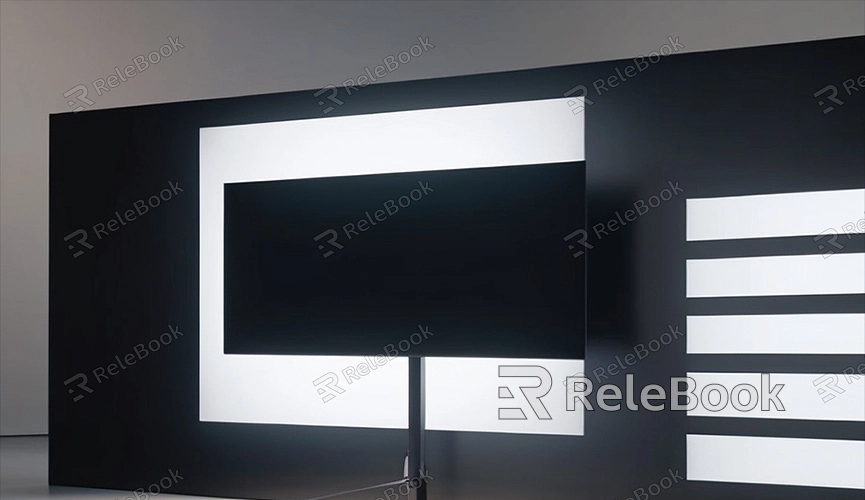Does Blender Render Display from the Camera POV?
Blender is a powerful 3D modeling and rendering software widely used in animation production, game development, visual effects, and more. When using Blender for rendering, many users are concerned about one question: Does the render result display from the camera's point of view? This article will provide a detailed answer to this question and introduce how to set up and use the camera's point of view for rendering in Blender.
What is the Camera POV?
In 3D modeling and rendering, the camera point of view refers to simulating the position, direction, and settings of a real-world camera to capture images of a scene. The camera point of view determines the content and composition of the rendered output. By adjusting the camera's position, rotation angles, and lens parameters, different visual effects can be achieved.
Blender Rendering Basics
In Blender, rendering is the process of converting a 3D scene into a 2D image. Blender provides multiple rendering engines, with Cycles and Eevee being the most commonly used. Regardless of which rendering engine is used, by default, Blender renders from the currently selected camera's point of view.

Setting Up the Camera POV
To set up the camera point of view in Blender, you need to create and select a camera object. Here are the specific steps:
1. Create a camera: In the 3D view, press Shift+A and select "Camera" to create a new camera object.
2. Position the camera: After selecting the camera object, use the G key to move and the R key to rotate. You can use the 0 key on the numpad to switch to camera view and see the effect.
3. Lock the camera view: In camera view mode, you can press the N key to bring up the sidebar, check "Lock Camera to View", and then use Shift+scroll wheel to adjust the camera position.
Rendering from the Camera POV
Once the camera point of view is set up, you can start rendering. Here are the basic steps:
1. Select the rendering engine: In the properties panel on the right, select the "Render" tab and choose the appropriate rendering engine (Cycles or Eevee).
2. Set rendering parameters: Adjust parameters such as resolution, sample count, etc., to achieve the desired rendering effect.
3. Start rendering: Press the F12 key or select "Render" -> "Render Image" from the top menu to start rendering. Blender will render from the currently selected camera's point of view and display the rendered image in the "Render Result" window.
Multiple Camera Views
In Blender, you can use multiple cameras to capture images from different perspectives. To switch camera views, simply select a different camera object and press Ctrl+0 to set it as the active camera. Then press F12 to render from the newly selected camera's point of view.
Applications of Multiple Camera Views in Scenes
Multiple camera views are very useful in the following scenarios:
1. Animation production: In animation scenes, different cameras can capture different action details of characters or objects.
2. Product showcasing: Using multiple cameras to showcase a product from different angles helps to fully understand its features.
3. Architectural visualization: In architectural design, showcasing different parts of a building through multiple camera views can better convey design intent.
Optimizing Camera POV Rendering
To achieve the best rendering effects, you can try the following optimization methods:
Adjusting camera settings
1. Lens type: In the properties panel of the camera object, you can choose different lens types (such as perspective and orthographic lenses) to change the rendering effect.
2. Focal length: Adjusting the camera's focal length can change the breadth of the view. A shorter focal length produces a wide-angle effect, while a longer focal length produces a telephoto effect.
3. Depth of field: By setting depth of field parameters, you can simulate the depth of field effect of a real camera in the rendered image, blurring the foreground and background.
Using view layers
In complex scenes, you can use the view layer feature to assign different objects to different view layers and render them separately. This helps with staged rendering and post-compositing, improving work efficiency.
Utilizing rendering settings
1. Sample count: In the Cycles renderer, increasing the sample count can improve rendering quality but also increases rendering time. You can adjust the sample count according to your needs to balance quality and speed.
2. Denoising: Using denoising functionality can effectively reduce noise in rendered images, improving image quality.
3. Ray tracing: Properly setting ray tracing parameters, such as reflection, refraction, and shadows, can significantly enhance rendering effects.
In summary, Blender defaults to displaying from the camera's point of view when rendering. By correctly setting up and optimizing the camera point of view, you can achieve high-quality rendered images. Whether it's a single camera or multiple camera views, Blender can flexibly meet different needs. If you have more questions or experiences regarding camera point of view rendering, feel free to share in the comments. Additionally, if you need high-quality 3D textures, HDRI, or 3D model downloads for creating models and virtual scenes, you can find them on Relebook. After downloading, simply import the textures and 3D models into your project for use.


